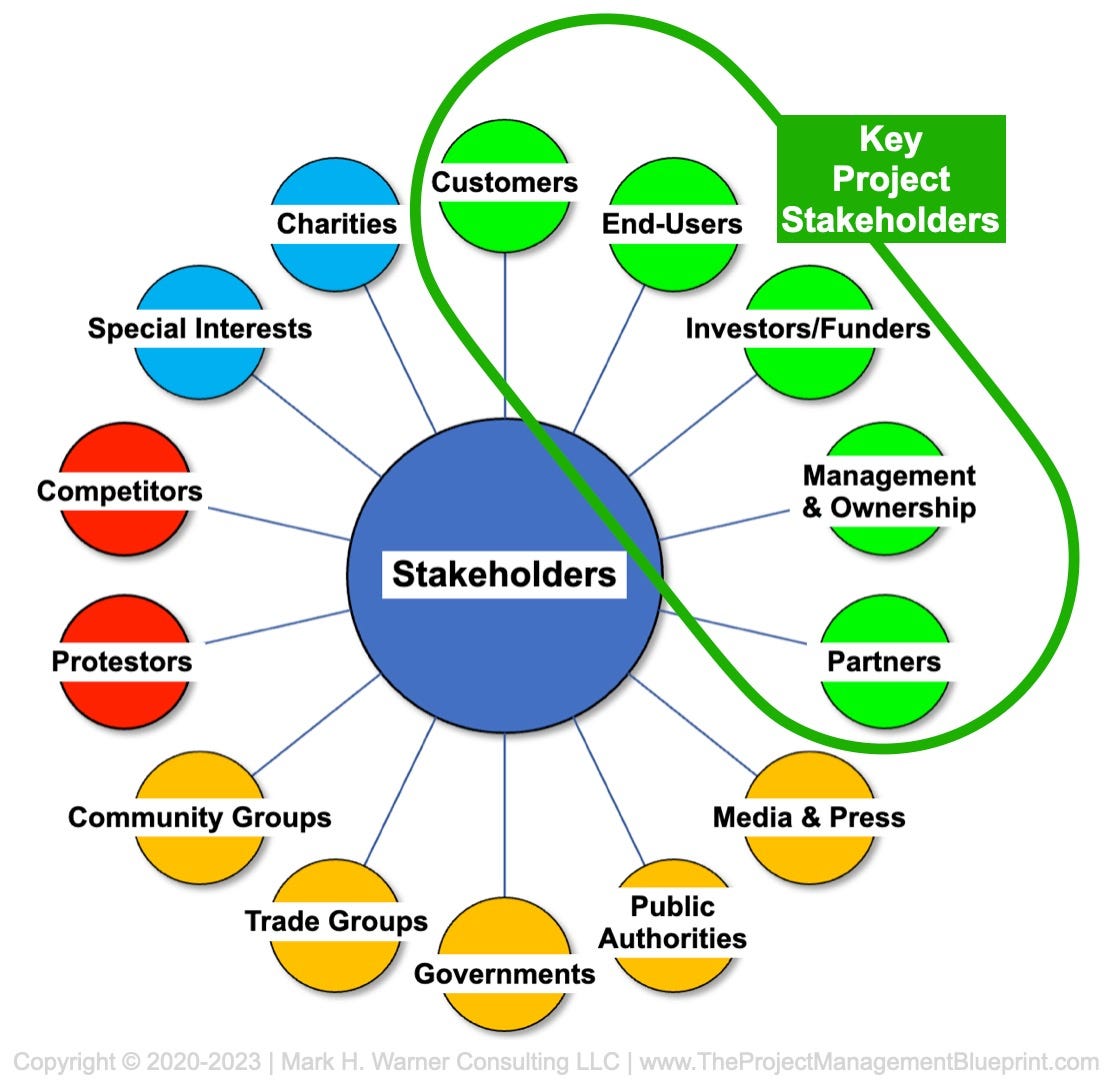Writing a Project Love Letter
What and Who Are “Key” Project Stakeholders?
[Starting a project] without the audience in mind is like writing a love letter and addressing it to ‘whom it may concern’.” —Ken Hamer, AT&T Research Manager
The first of the six project planning questions asks who is the project for—and why do they want it? This is a fundamental—but often overlooked—step when planning a project. Many new (and even some experienced PMs who should know better) begin a project by jumping into creating work breakdown structures, org charts, schedules, and cost estimates. But that’s a mistake.
A huge mistake.
You must always take the time to fully understand what the project is all about. And you can’t do that until you identify the “key” project stakeholders and fully understand their ideas of what a successful project looks like.
What is a “Key” Stakeholder?
A project stakeholder is anyone that has interest in, and/or influence over, the project. We can chart these two traits of any stakeholder on a two-axis grid of interest vs. influence. The more interest and/or influence over a project, the more “important” they become to us. Low interest + low influence = someone we only have to monitor and check-in with occasionally, while someone with high interest and high influence often implies active engagement and consultation. In between these two extremes are, well, in-between stakeholders.
A stakeholder can also be characterized by their project stance: i.e., are they pro-, anti-, or neutral to the project outcome? Eventually, we’ll have to identify all project stakeholders—good, bad, and neutral alike—but at the start of a project, it’s imperative to focus on the so-called “key” project stakeholders; i.e., those people with high-interest, high-influence, and a pro-project stance.
Every project is unique, and will have its own distinct key stakeholders. Typically, however, these people will include customers, end-users, future owners, and funding entities that requested the project. These are the people and institutions that strongly want the project to succeed—and have a significant ability to influence the project outcome. And so step one of any project is to identify these people—they uniquely understand the reason the project exists in the first place, have a strong interest in its outcome, and also have power and influence that we want to tap into.
Or, to paraphrase Ken Hamer, these are the people our project love letter must be written to.



